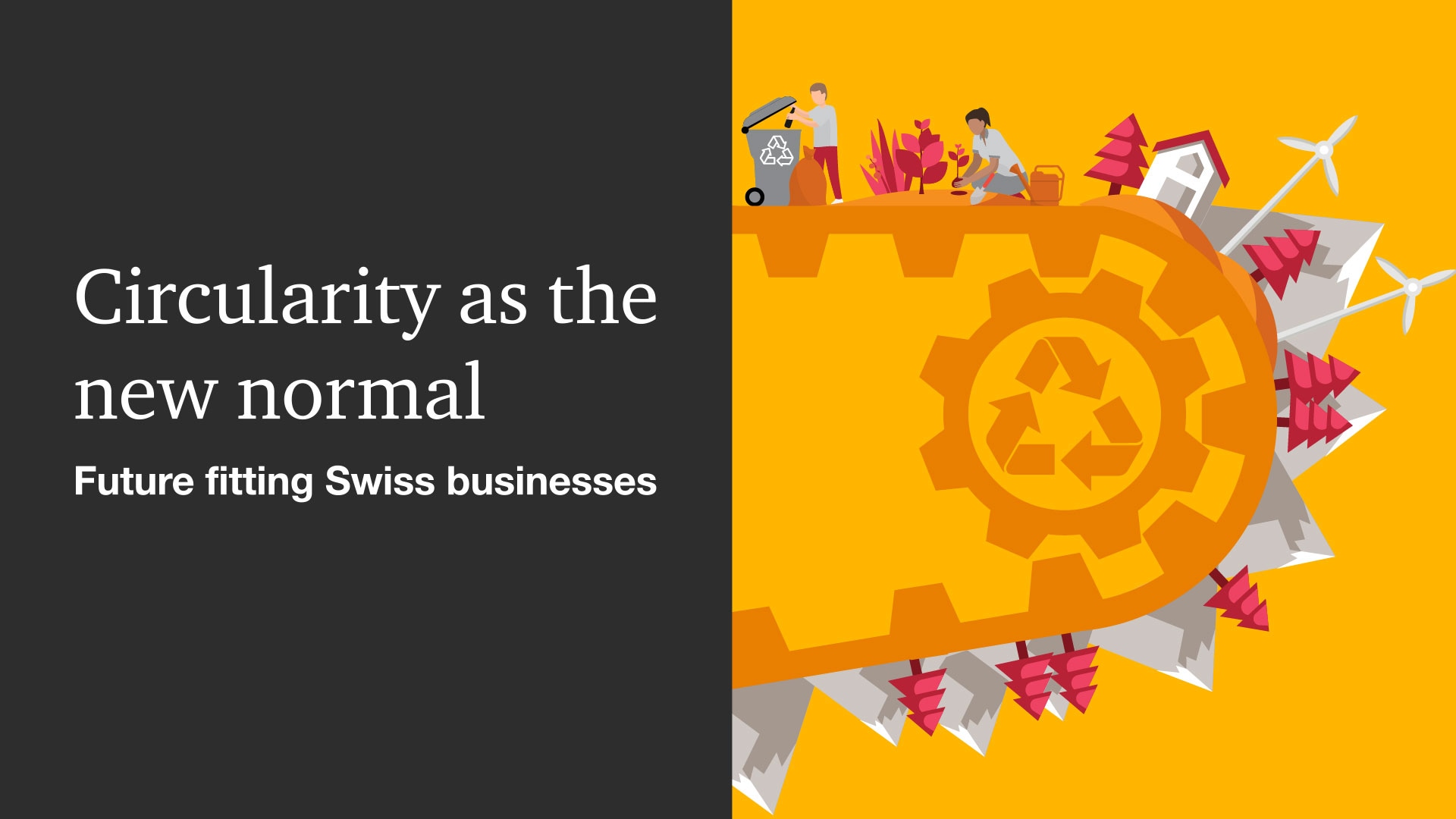{{item.title}}
{{item.text}}

{{item.text}}
As governments and supranational organisations step up the pace of progress towards net-zero emissions, industries are coming under pressure to find ways of operating more sustainably. Smart companies are starting to adopt win-win solutions that will not only enable them to meet increasingly strict sustainability requirements and expectations, but will also boost their efficiency and ultimately their profitability. Circularity – or circular economy – is emerging as one of the most intelligent and promising approaches.
Circularity can basically be defined as securing resources by minimising resource inputs and waste, emission, and energy leakage of products over time. Watches and luxury goods are an example of a segment that has a lot to gain, in both economic and reputational terms, from addressing this issue. The trouble is that most customers, and many people in the industry itself, aren’t aware of the whole environmental impact the business model has.
Behind the face of a luxury watch lies what in many cases is an immense ecological footprint stemming from a long and complex supply chain. Unfortunately, this supply chain is often a black box. In reality, however, there are important choices made at every link in the chain – from the extraction and sourcing of materials, to product distribution, sales and marketing, and customer use. All these decisions affect the social and environmental footprint.
One of the main reasons for the large environmental footprint of the watchmaking and luxury goods sector is the sourcing of raw materials. The industry uses over 50% of annual gold production worldwide (more than 2,000 tonnes), and this entails high carbon emissions. Recycled gold has a much lower carbon footprint than newly mined (virgin) gold. But only 25% of the gold used to make jewellery and watches is recycled. There’s clearly a great deal of potential for the sector to radically boost its performance in this sphere – all the way up to the end of the product life cycle. There are also opportunities for companies to not only master the challenges within their own industry but together with other sectors as well (e.g. finance industry or electronics) that are likewise highly exposed to these raw materials.
As this example shows, the decisions at the extraction and sourcing stage include choosing between environmentally and socially costly virgin materials (such as gold or diamonds) and recycled resources. Other choices at this phase with a serious impact are LSM (large-scale mining) versus ASM (artisanal small-scale mining); whether materials are transported by ship or by air, by truck or by plane; and the sources of the energy used to refine raw materials and manufacture the finished product.
Great potential for boosting the environmental and ethical performance of luxury goods at the extraction and sourcing stage also lies in alternatives to commonly used raw materials. The production of animal-based materials involves very substantial carbon emissions – particularly the leather used for watch straps. Firstly, we have the general problem that livestock, notably cattle, account for an astonishing percentage of global carbon emissions (according to many estimates well over 10%). Secondly, the amount of leather required to cut out the pattern is much bigger than the watchstrap itself, resulting in a great deal of waste. Thirdly, the leather has to be flawless and is thus sourced from dry and deforested areas where cow hides are not marked by mosquito bites. The good news is that alternatives are already available, with companies such as Modern Meadow and its ZOA range providing animal-free, plant-derived, biofabricated materials.
Environmentally and socially critical choices are also made at the product distribution, sales and marketing stages. They include decisions on how the goods are transported, the materials used in window displays, and the frequency of marketing campaigns.
For example, point-of-sale displays in luxury stores are usually large, using substantial amounts of materials for the small number of watches they present. If these window displays are changed regularly due to the high frequency of marketing campaigns, even more materials are used.
On the other hand, luxury goods that are sold online do not require physical window displays, and therefore much less material is used. However, the frequency of shipping will increase, and with it the quantities of packaging materials required.
Last but not least, there are crucial choices at the customer use end of the chain which influence the footprint of a watch. Do I want to buy a quartz watch, a smart watch or a mechanical model? What happens once I’ve finished with it? Do I dispose of it or sell it to someone else? Or is it a precious investment that I want to pass on as a family heirloom?
Even if each of these choices in isolation has only a relatively small impact, the cumulative effect is immense. The industry could do a great deal to improve its environmental and social performance if the choices at each stage of the chain were to be made more consciously and transparently – and with circularity in mind.
The watches and luxury goods industry is under pressure from regulators and other stakeholders (gradually including investors as well) to be transparent about its environmental footprint. Given the growing, widespread sensitivity to ESG (environment, social and governance) factors, this pressure is only set to increase.
Circularity can help companies in this industry transform the pressure into potential. A circular economy makes business as well as environmental sense. By taking a close look at their value chain and rethinking the way they use and reuse resources, watch and luxury goods manufacturers have a great opportunity to operate more sustainably, progress towards net-zero emissions – and in the process cut costs and ultimately run more efficiently and profitably.
In our webinar on Circular Economy for the watches and jewellery industry from 18 May 2021, we looked at how the industry can build on circular economy principles to progress towards net zero ambitions:
We explained that this is an ideal opportunity for the industry to emphasise its inherent sustainability and communicate this positioning effectively: quality watches and jewellery are high-end products that are traditionally bought to be enjoyed for a long time and often passed on from generation to generation. The notion of sustainability is thus in the industry’s DNA. Our webinar recording on circular finance is an opportunity for you to also consider the issues from the point of view of the finance industry and thus another level of the value chain.
Discover how to transform and grow your business by adopting the circular economy in our new report ‘Circularity as the new normal – Future fitting Swiss businesses’.
{{item.text}}

{{item.text}}

Partner, Finance Transformation Platform Leader and Sustainability Platform Leader, PwC Switzerland
Tel: +41 58 792 25 37

Partner, Sustainable Capital and Sustainability & Strategic Regulatory Leader, PwC Switzerland
Tel: +41 58 792 45 23


